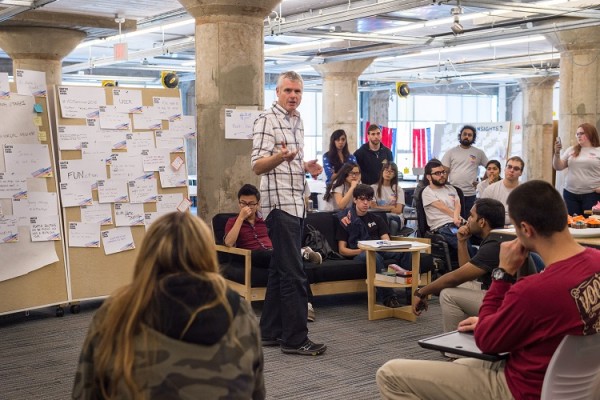Eyeglasses can be colorful, elegant and make a fashion statement. They become an extension of a person and reflect the wearer’s personality. Viewed over time, they blend in.
What if someone’s wheelchair or accessible device was thought of in the same way?
Professor Don Carr thinks we can get there with a wide array of products and it’s time for a new way of thinking about adaptive design.

“That’s a very powerful goal when design and engineering work together. You’re not signaling to the world that you’re different through what you’re wearing or the apparatus you elect to use,” says Carr, a professor of industrial and interaction design.
“If we can overcome some of these challenges, that would be huge,” he says.
Carr is the coordinator of the College of Visual and Performing Arts’ master of fine arts degree program in collaborative design in the School of Design, which launched last year.
Students in the program work on interdisciplinary teams to explore intelligent spaces, products and materials, and branch out across campus and into the community to bring others into the process.
The key is to include areas of strength in other disciplines within the University.
Fit-IN
During the fall semester, the design students worked with College of Engineering and Computer Science (ECS) students during the annual Fitness Inclusion Network (Fit-IN) conference and considered design challenges for people with a range of abilities.
The ECS students were from the “Introduction to Entrepreneurial Engineering” course taught by Mark Povinelli, the Kenneth A. and Mary Ann Shaw Professor of Practice in Entrepreneurial Leadership.
Povinelli’s class focuses on what it takes to create a startup business using project-based design problems. This includes working with the end user, observing and listening to the problem, empathizing with the user’s situation and going through the ideation process before prototyping and implementing a final design.
Sport, dance and recreation
A collaboration of the Upstate Foundation/Golisano Children’s Hospital, SUNY Cortland’s Department of Physical Education and the Burton Blatt Institute (BBI), Fit-IN seeks innovative ways to promote inclusive fitness for people with disabilities.